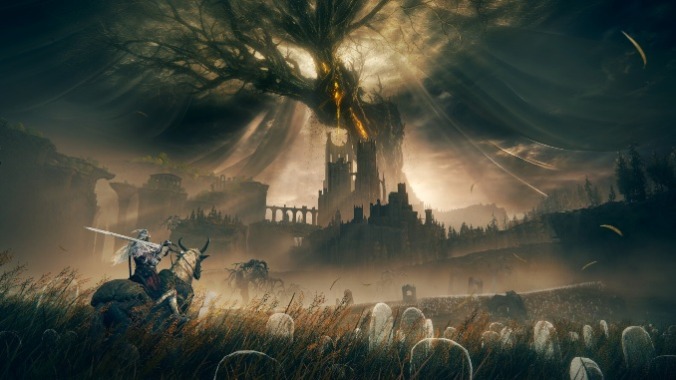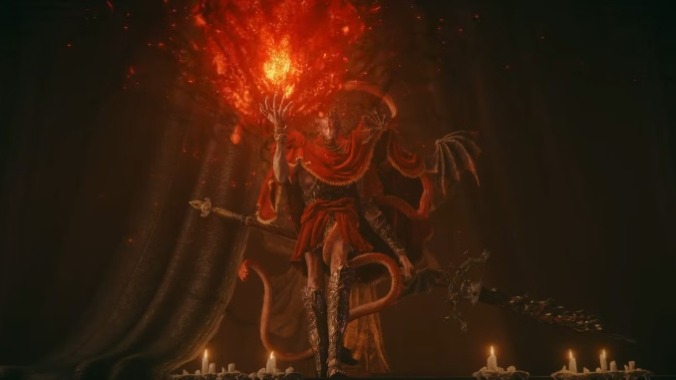Elden Ring: Shadow of the Erdtree Bears the Weight of Its Predecessor with Grace

Elden Ring was a bit of a big deal when it came out more than two years ago. While FromSoftware’s games have been deeply influential for quite some time, their latest action RPG hit the zeitgeist on a different scale, eventually catapulting it into an echelon of sales figures usually reserved for sports games and cynical military shooters. Critically, it was hailed as a generational open world title, won a bunch of awards, and here at Paste, we liked it quite a bit, too.
With all those accolades, Shadow of the Erdtree, the long-awaited expansion for Elden Ring, has a lot on its shoulders, a weight that’s only increased during its years of development. But despite that pressure, this DLC largely meets these expectations, delivering stunning imagery, a brilliantly designed open world, (mostly) well-designed boss fights, and plenty of sadistic scenarios to appease the masochists. Although pitfalls from the original remain, this new setting expands on the sense of place and exploration that made the base game special.
For those who haven’t been greedily devouring every morsel of information about its release, here’s the setup. After you’ve slain two particular foes, Starscourge Radahn and Mohg, Lord of Blood, you can interact with a particular egg to be whisked away to the realm of shadow, a distant world that vaguely resembles the one you came from. Here, you must find Miquella, a demigod working towards a mysterious purpose.
From the first steps you take into this new backdrop, this expansion commands the same sense of wonder as the main experience. Your journey begins in an open field of spectral graves that gives way to a landscape of mountains and castles, the familiar sight of an unfathomably large tree indicating that this place is bound to where we came from. But although this massive landmark resembles what we’re familiar with, these similarities branch out in exciting directions.
FromSoftware had previously stated that the open world in this add-on is roughly the size of Limgrave, the starting area from the base game, but the realm of shadow feels more layered and densely packed with discoveries than what came before, as caves and obscure pathways lead to vastly different locales. Many will likely remember how they felt when they came across the subterranean stars of Siofra River Well for the first time, and here, I ran into a variety of similarly sudden finds, whether it was gorgeous coastlines, verdant ruins, or large holes that led to revelations. Elden Ring’s major pivot from the studio’s previous work was the size and scale of the proceedings, but Shadow of the Erdtree manages to capture a similar sense of discovery while placing magical moments closer together, alleviating some of the tedium that previously came from long rides on horseback through familiar terrain. In short, it results in one of the most engaging, strange, and enchanting spaces to explore in recent memory.

Also, if you’re like me and you’ve dumped too much time into attempting to exegete this narrative, you’ll be glad to come across bits of visual storytelling that carry compelling ramifications, even if, similar to the main experience, there are frequently more questions than answers. I don’t think this caginess is inherently a bad thing, though, as much of the fun comes from building theories and parsing out greater thematic throughlines from these fragments. That said, the biggest flaw with the story from this DLC is that it all needs to fold seamlessly into the existing experience without altering the existing endings, and thus, it comes across more like a side quest than something that befits its larger-than-life imagery. As a result, much of the strongest narrative beats come from the understated environments you come across while exploring the space instead of what lies behind the last fog gate.
Another element that benefits from the previously mentioned greater density of carefully curated areas is that it’s much more common to come across the studio’s trademark boss fights, encounters that, at least visually, feel plucked from myth in the best way possible. To put it into numbers, the base game features 15 “major” bosses (as in, ones who gift Remembrances when you kill them), while this expansion has around 11, by my count, in a much smaller space. And on top of there being a greater concentration of these giant dudes who want to murder you, the hit rate of enjoyable ones is pretty solid, although there are a few stinkers and one particularly deflating encounter.
As a Souls fan, one element of Elden Ring that I found disappointing was how a decent number of its bosses, and especially mini-bosses, did not feel particularly well-tuned, as their attacks were overaggressive and left barely any time to get a hit in (especially if you’re a fellow giant sword enthusiast, such myself). Shadow of the Erdtree showcases a range of extremes for its climactic battles, and while most of them don’t have this problem, a few do, including the lynchpin of the whole experience.
On the positive side, there’s the heavily marketed Messmer, whose nail-biting first phase gives way to a flashy second half that showcases FromSoftware’s mastery of melding grandiose aesthetics and riveting mechanics. His attacks may be quick, but they’re well-telegraphed and leave enough room to get a blow in, making this fight feel “fair” while still maintaining the sense you’re in mortal combat against a demigod. Most of the major enemies fall into this camp, and whether it was spell casting duels against a battle mage or dodging combos that involved a spectral horse, the majority of these adversaries showcased the best of what this studio has to offer, both visually and in terms of combat design.

